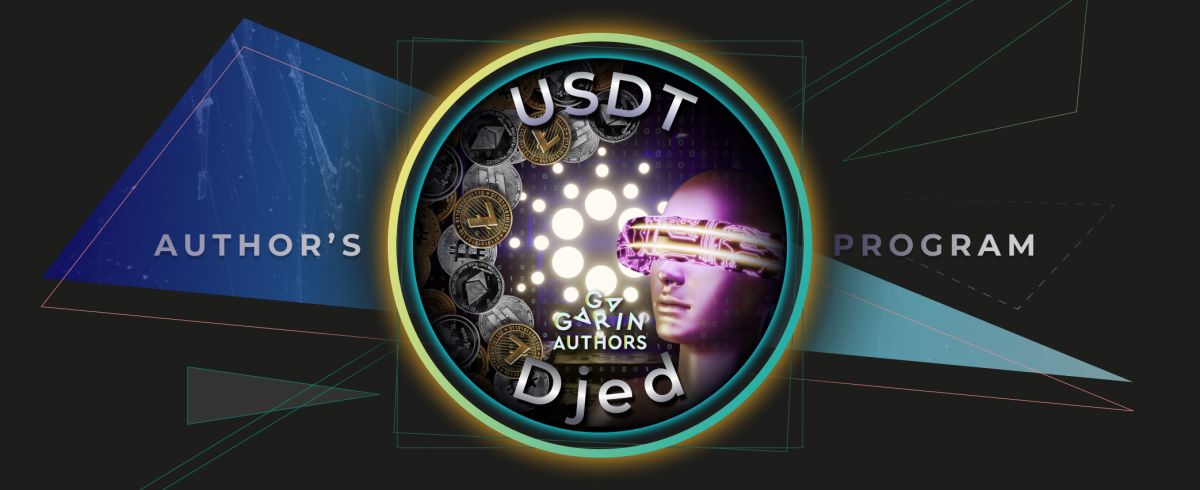Cardano stablecoins: USDA и Djed

In early 2023, Cardano will release two stablecoins that are fundamentally different from each other but intend to solve the same tasks. The article analyzed in detail what their prospects and features are
On this page
Introduction
In recent years, stablecoins have come under increased scrutiny of regulators. The main concerns are the principles of operation of algorithmic stablecoins, the transparency of reserves, and the adequacy of the centralized stablecoins provision.
Incredibly often, the problems were discussed after the collapse of one of the most significant algorithmic stablecoins – TerraUSD (UST) that caused the fall of the entire cryptocurrency market. As a result, many stablecoins faced a temporary rate unpeg.
But the issue of reserves remains the main subject of discussion of their reliability. And the key concern here is that most of the reserves of centralized stablecoins are a complex mixture of stocks, secured loans, corporate bonds, precious metals, and other assets. And most typically, companies are criticized for the lack of proper audits to confirm reserves. In addition, these issuers need to be appropriately regulated, which increases the risks for investors.
Cardano is currently working on releasing two new stablecoins, which are tasked with solving critical issues inherent in most stablecoins.
The Cardano development team plans to release the first fully regulated stablecoin, USDA, backed by fiat and pegged to the US dollar in 2023. As well as an over-collateralized algorithmic stablecoin issued by the COTI platform called Djed.
The principle of operation of centralized and algorithmic stablecoins is different, and in this article, we will briefly describe the features of each of them.
USDA
On November 18, 2022, in Singapore, Emurgo announced the launch of a new stablecoin on the Cardano blockchain – USDA. This stablecoin will be fully regulated, backed by the US dollar, and pegged 1 to 1.
Emurgo is one of the co-founders of the Cardano project. Its mission is to develop and support businesses and help integrate businesses into the Cardano ecosystem.
One of the Cardano’s global goals is to provide access to banking products to every person in the world. The company has been successfully developing its products for a long time in the markets of Africa and Asia. People there have no access to banking services, and the country's national currency is depreciating too quickly to act as a store of value.
To achieve this goal, the Cardano developers are introducing a set of products called “Anzens”, designed to connect traditional financial services to cryptocurrency. USDA will be the first product to help bridge the gap between TradFi (traditional finance) and DeFi (decentralized finance).
The Cardano ecosystem was built on the ethos of bringing real world applications to crypto and creating the foundation to build the economy of the future. The introduction of a fully fiat-backed, regulatory compliant stablecoin is the next step in realizing the future for our community. This stablecoin not only offers stability to investors conducting financial transactions on the blockchain but advances a path forward for the Cardano ecosystem to address a problem we are uniquely positioned to solve — banking the underbanked
says EMURGO Fintech Managing Director Vineeth Bhuvanagiri.
Users can tokenize their USD to USDA via credit cards, wire transfers, direct deposits or payments, and native ADA token conversion. USDA is scheduled to launch in the first quarter of 2023 on the Anzens platform. It will be followed by implementing plans to provide a secure and convenient conversion of other stablecoins to USDA (for example, USDC and USDT), as well as cryptocurrencies such as Bitcoin, Ethereum, and others.
To fully comply with regulatory requirements and ensure compliance with oversight rules, Emurgo has partnered up with an as-yet-unnamed regulated US financial services company to act as the banking partner responsible for issuing USDA tokens and holding deposits.
By relying on regulation and the provision of tangible assets, the USDA can guarantee reliable long-term price stability, ultimately opening more global financial services to the Cardano ecosystem.
Djed
Unlike fiat-backed stablecoins, algorithmic stablecoins are regulated by specific algorithms that manage the balance between supply and demand, thus ensuring exchange rate stability.
Djed is an algorithmic, overcollateralized stablecoin backed by the Cardano (ADA) token and SHEN.
Algorithmic stablecoins, backed by a single currency, have some vulnerabilities. To solve this problem, Djed has a reserve asset – the SHEN token.
The concept of “over-collateralization” means that the stablecoin is backed by excess collateral in the form of a cryptocurrency held in reserve. And, if ADA falls too quickly, the underlying smart contracts include a reserve SHEN token that will be used to balance price fluctuations, helping to ensure a 400% to 800% over collateral level.
This stablecoin has been developed for more than two years in partnership with the COTI platform and IOG (please see the document describing all the technological features and operation of the stablecoin here)
COTI is a first-level blockchain payment network that provides a throughput of up to 100,000 transactions per second through the Proof-of-Trust consensus mechanism. COTI provides the infrastructure needed to create and issue stablecoins that are highly secure, scalable, and have low transaction fees.
Input Output Global is an engineering and technology company engaged in cryptocurrency development and research activities.
The Djed stablecoin has been running on the testnet for several months now. And according to a tweet posted by the team on December 6, the 1.1.1 test version of Djed has been reactivated to include new features such as compatibility with the Vasil hard fork, activity history, and more.
Following completing a series of audits and stress tests, Djed is scheduled to launch on the mainnet in January 2023.
During the Cardano Summit in November, COTI CEO Shahaf Bar-Geffen stated,
Recent market events have proven again that we need a safe haven from volatility, and Djed will serve as this safe haven in the Cardano network. Not only do we need a stablecoin, but we need one that is decentralized, and has on chain proof of reserves.
Conclusion:
The primary mission of Cardano is to bring blockchain technologies into real life and provide access to them to anyone in the world. It is much work from a technological point of view, but the Cardano team is making good progress in this direction.
Providing economic identification is a crucial component in countries where people do not have an identity card or access to the banking sector. For example, in developing countries in Africa and Asia, digital services and decentralized identity will give people access to education, banking services, and the employment market. And Cardano is already addressing some of these issues by developing projects like Atala Scan, Atala Trace, and Atala Prism.
Cardano-powered stablecoins that share these values will help bring stability to the broader ecosystem and restore trust by acting as a trusted channel between TradFi and DeFi. It can bring cryptocurrencies closer to their original goals: provide access to digital financial for every person and ensure independence from centralized issuers.
The content on The Coinomist is for informational purposes only and should not be interpreted as financial advice. While we strive to provide accurate and up-to-date information, we do not guarantee the accuracy, completeness, or reliability of any content. Neither we accept liability for any errors or omissions in the information provided or for any financial losses incurred as a result of relying on this information. Actions based on this content are at your own risk. Always do your own research and consult a professional. See our Terms, Privacy Policy, and Disclaimers for more details.






























